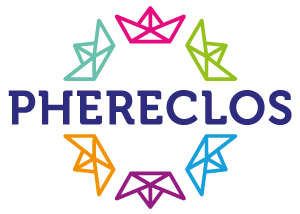Kide Science
- Finland,Helsinki, Uusimaa
- 2020
_Kide_Science.png)
| Time frame | |
| Categories | |
| Level of Schools | |
| External Partners | |
| Type of Schools | |
| URL | |
| Number of Schools involved | |
| Number of Schoolheads involved | |
| Number of Teachers involved | |
| Number of Students involved | |
| Number of Parents involved | |
| Number of External Partners involved |
“Kide Science” provides teachers with everything they need to carry out exploratory activities: online training, detailed lesson plans that guide step by step through the process of exploring with a child, and the stories and tools needed to create an imaginative world. This play-based Kide lesson plan package and supportive training is used for children aged 4-6.
The aim of the practice is to support teachers in the implementation of playful science education for children aged 4-6.
Kide Science provides teachers with a play-based Kide lesson plan package and supportive training.
Kide Science education strengthens the science education work in the kindergarten and enhances the skills of the kindergarten staff to help children to become critical thinkers.
Kide Science education strengthens the science education work in the kindergarten and enhances the skills of the kindergarten staff to help children to become critical thinkers. It would be interesting to develop a similar model for STEAM education with older students.
The pedagogical model of Kide Science was born during academic research done at the University of Helsinki. The company utilizes imaginary science scenarios as the basis of STEM learning, combing hands-on, hearts-on and heads-on learning in a play-based environment, where adults play together with children.
During Kide lessons, teachers and children step into Kide scientist roles where they get to solve real problems. During the introduction, the characters of a fantasy world called “Supraland” bring a mystery, which children solve together with the teacher by doing experiments. While doing experiments, children learn essential science process skills, such as measuring and observation.
The methodology is strongly based on pedagogical approaches that underscore children’s agency and active participation in all phases of inquiry.
Kide Science model include a pedagogy that combines all STEAM subjects in an exhilarating way. Science: Children learn about chemical reactions and solubility with the measurement-loving scientist Kelvin.
Technology: Children use their imagination to design their own machine and learn computational thinking with the bossy but loving Mrs Noblegas. Engineering: Children learn about electricity and build their own electric circuits with the steaming Robot Hoseli. Art: Children get creative and design their colour hurricane with the artistic scientist Esther. Mathematics: Children learn about shapes and stable structures with the accurate scientist Pi.
Kide Science model integrates pedagogical knowledge of small children with the practical knowledge of science processes, primarily observation, measurement, classification, quantification, inferring, predicting and communications.
The practice is implemented in the preschools, and in that sense, it’s strongly based on local culture.
It seems all partners have an equal understanding that the best way to engage children with science education is to start it in early childhood. Presumably, the positive experiences with science predict better learning outcomes when children are older.
Kide Science provides teachers with everything they need to carry out exploratory activities: online training, detailed lesson plans that guide step by step through the process of exploring with a child, and the stories and tools needed to create an imaginative world.
The project presents a new way to approach STEAM education. It introduces new pedagogical innovation to use play as a leading activity in STEAM education. Therefore, it gives possibilities for preschools to reconsider their ways to teach young children.
Assessment happens on two levels: teacher’s self-competence and children’s actions while the project is implemented. Teachers fill the pre and post surveys, and children’s interactions are video-recorded.
